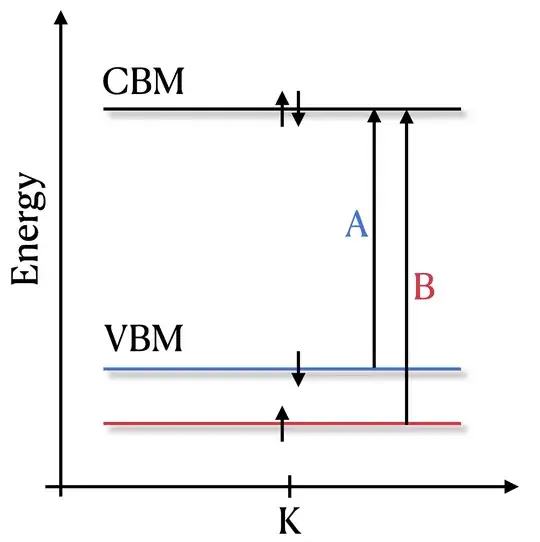In many publications on electronic excitations I stumbled across a categorisation of excitons (electron-hole quasi-particles), namely A- and B-excitons. Could someone please explain the difference between both and also give some historical context where these names actually stem from?
1 Answers
In the particular studied case of excitons in TMDC monolayers the labelling as A- and B-excitons stems from the nature of the band structure. Monolayer (ML) TMDCs are semiconductors with a direct band-gap at the high symmetry point K. There, the energetically highest valence band is spin-split due to strong spin-orbit interaction caused by the heavy-metal ions. This spin-splitting is quite large, mostly in the order of $100 \, \mathrm{meV}$. The lowest-lying conduction band on the other hand is not effected that strongly by the spin-orbit interaction with a spin-splitting of only ~ $1 -10 \, \mathrm{meV}$. For simplicity we can consider the lowest conduction band as spin-degenerate. 
I added a sketch that shows the relevant energy levels between which optical transitions occur. As these are different in energy, the exciton energies for both transitions will also be different. Thus, they are named A-exciton and B-exciton, respectively.